( Image: A freshly hatched Sulphur dun that crawled up on my waders on the West Branch of the Delaware in the Catskills as it was shedding its nymphal shuck that looks like a Pheasant Tail nymph – thus the case for a Sulphur dry with a brown Z-lon tail shuck and a PT dropper during this hatch- Supinski image )
Using a very sophisticated communicating code that confused the hell out of Allied intelligence, Nazi German U-Boats reeked havoc in the Atlantic and North Sea by destroying Allied Navy and commercial shipping vessels and thus killing thousands. Thanks to Polish mathematicians cracking the first series of Nazi Enigma codes and then conveying their deciphered formulas to the British mathematical genius Alan Turing in operation Ultra, their work was perhaps the most single factor that brought down the Nazi evil that almost conquered the world. Similarly in the natural world, the instinctual feeding selectivity codes used by trout can confuse the hell out of anglers during heavy complex hatches. It seems to be a primitive and perplexing foraging code born out of security, comfort and metabolic utility of predation energy being spent to allow caloric intake. A code nonetheless that can be difficult to decipher and be hidden in the enigmatic masking hatch.

Most trout fly anglers fly fish to catch trout. That is the perfectly logical and healthy thing to achieve for all your calculated efforts. But for some very deranged and twisted dry fly druids like myself and others, the true wonder is in the puzzle and conundrum of what selectively/ reflective trout should be eating-but are not. Our perverse buzz lies in the pure dope and addiction that takes place when you are not catching trout, even though you are using what is intelligently perceived as the right pattern. The persistent trout refusals to your highly elite and perfectly matched pattern just starts the manic obsession to crack the enigmatic hatch matching code that their feeding has produced-therein lies the eternal joy and sport of the highest caliber. But please convince yourself that this is the case as your nail biting, jittery hands changing fly patterns and sweaty eyebrows indicating extreme anxiety is taking place-so much for the joy and sport.
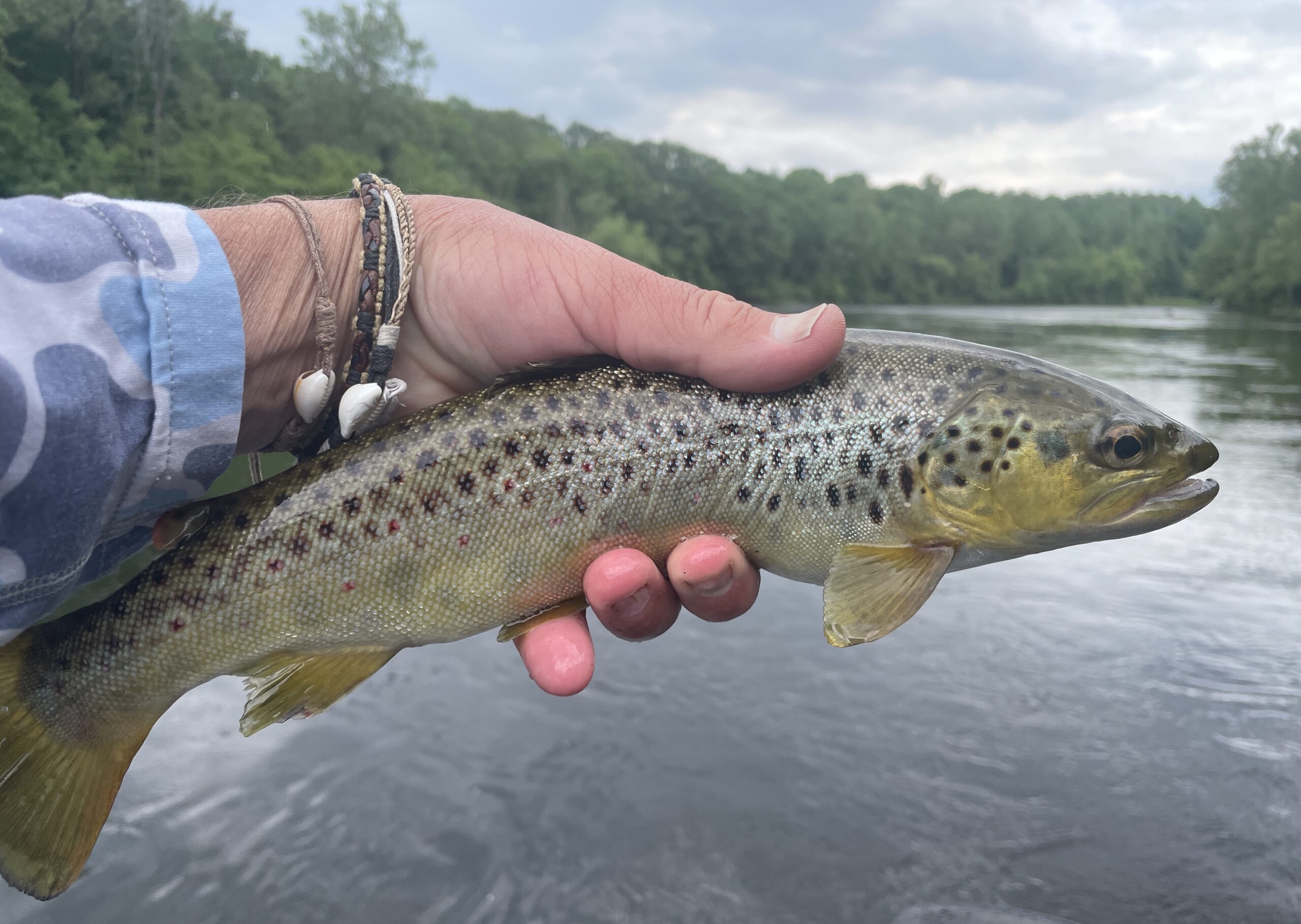
The textbook definition of “masking hatch” is when a super hatch is going on of mayflies, stoneflies or caddis, and the trout seems to be taking something else like midges that are hardly noticed -or something that can’t be discerned by the often highly educated hatch matching angler. On my latest Hallowed Waters Podcast, guest and author Mike Lawson talked about “trout being rather stupid and not as opportunistic as other warmwater fish”. He goes on to mention that a bass will take any form of food that comes by it and thus obviously maximizes its caloric intake. “A trout on the other hand always seems to be glued in on one specific food form and every minute detail of it, which makes it so selective despite maybe thousands of other food forms available in a paralleled hatching scenario. For instance they will stubbornly feed on minuscule leftover Trico spinners when a seriously bigger and more meatier hatch of mayflies is just starting. This “fixation” to one food, despite the obvious food form they should be partaking in, is part of cracking the code conundrum of the masking hatch.

https://podcasts.apple.com/us/podcast/31-spring-creeks-gods-special-brews-guest-mike-lawson/id1606667042?i=1000614256640
Cracking the Masking Code- Case Files
Here are a series of examples to cracking the masking code that we will all encounter on some days:
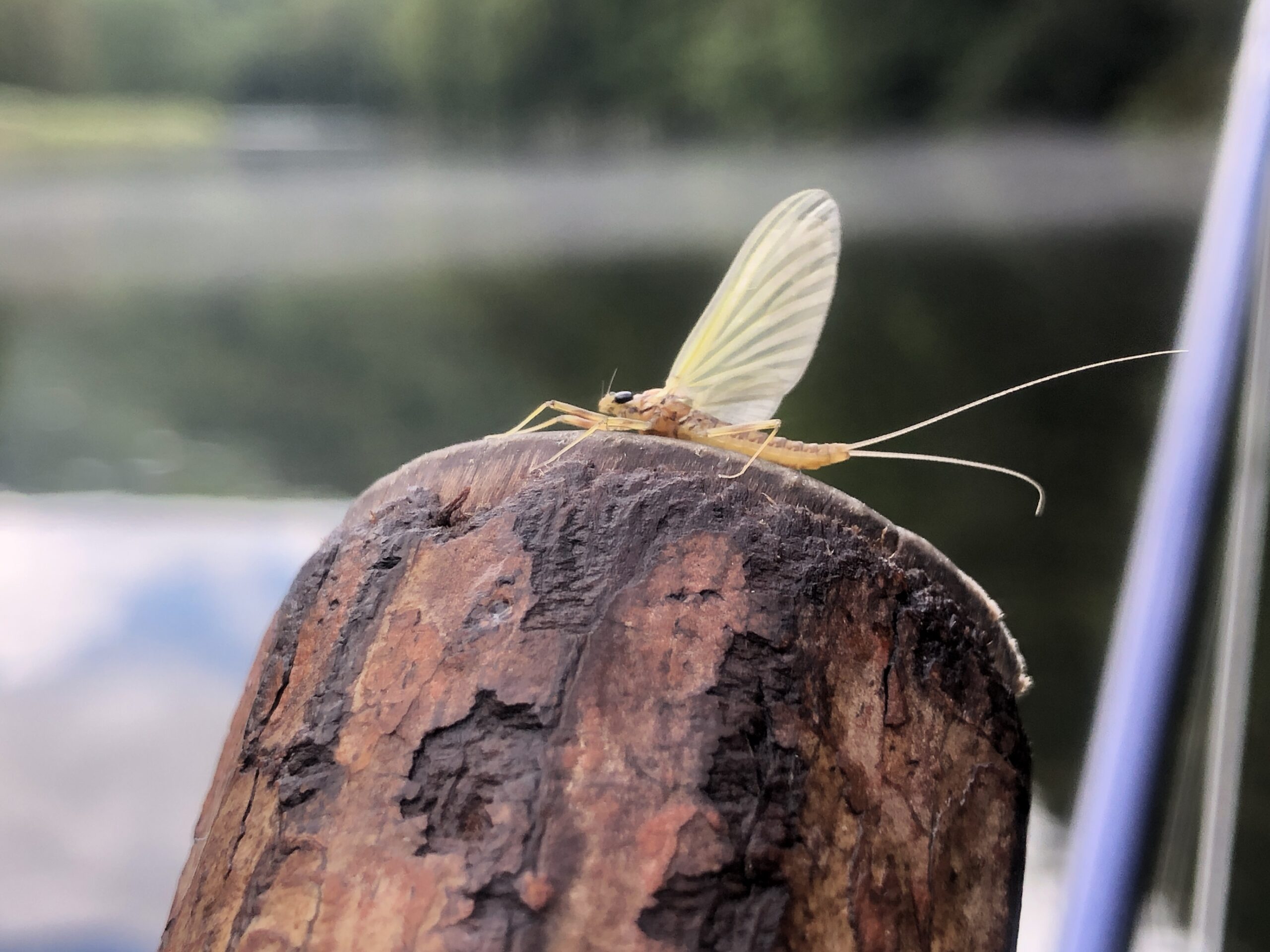
Case 1- Big Fly-Wrong Fly Here Lies the most classic masking hatch example. A massive hatch of green or brown drakes ; or sulphers is occurring and yet the trout are refusing our well presented imitations of these and appear to be feeding on something else-something that is so minor that it is not the obvious.
One of the biggest masking culprits are caddis. Mayflies are the Holy Grail, the insect that entire books are written about, and what you the hatch matcher is taught to pay attention to from the Catskills to Montana; and beyond. During the big PMD hatches of the west we are classically trained to be fixated on mayflies and their appropriate stage of emergence. Since caddis and the other usual culprits : midges for example, emerge all day long and egg-lay all day long, thus their bond with the trout’s locked -in prey targeting can usually be solidified by the “strength in numbers and regularity” table fare.

( We are conditioned to fish Elk Hair Caddis dries- but it is often the pupae laying flushed in the film that is the target in the masking hatch)
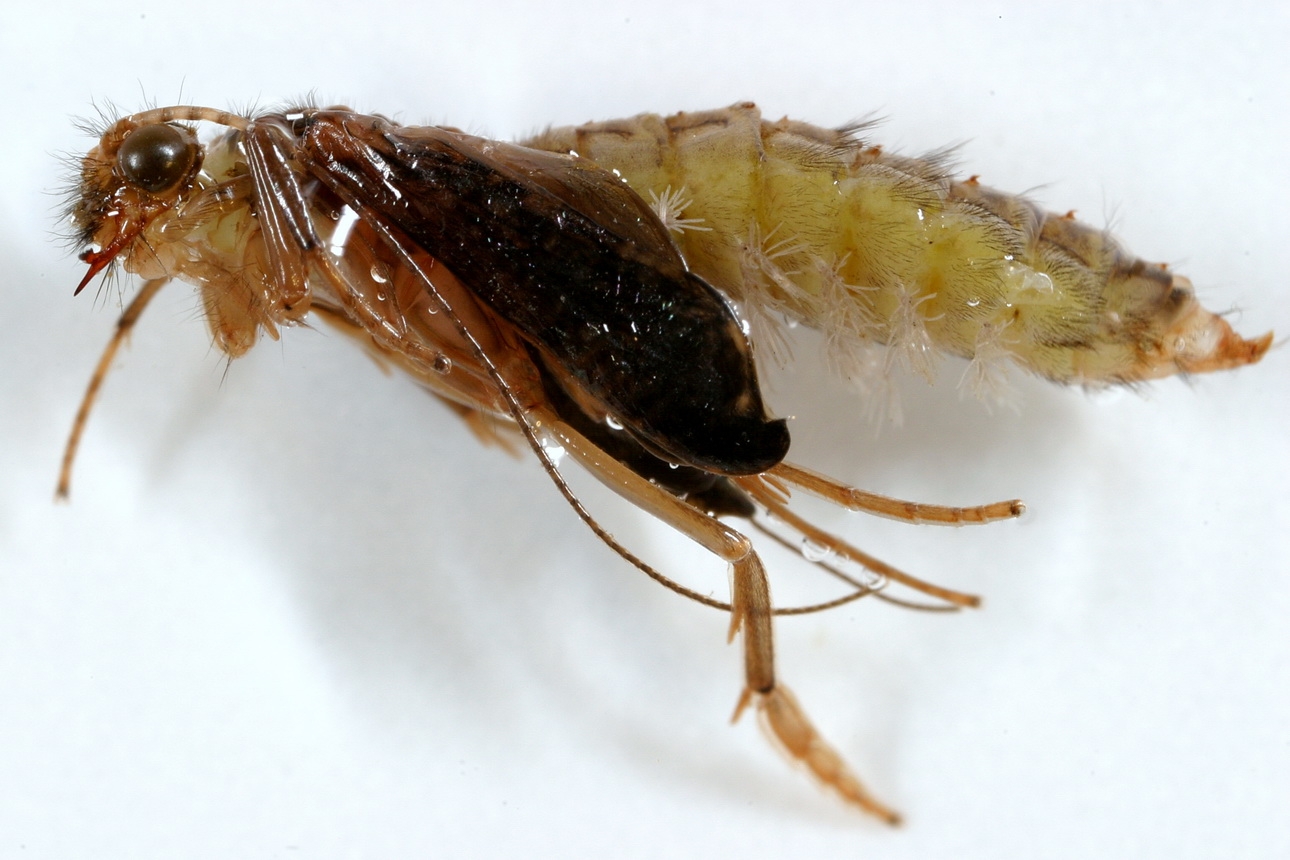
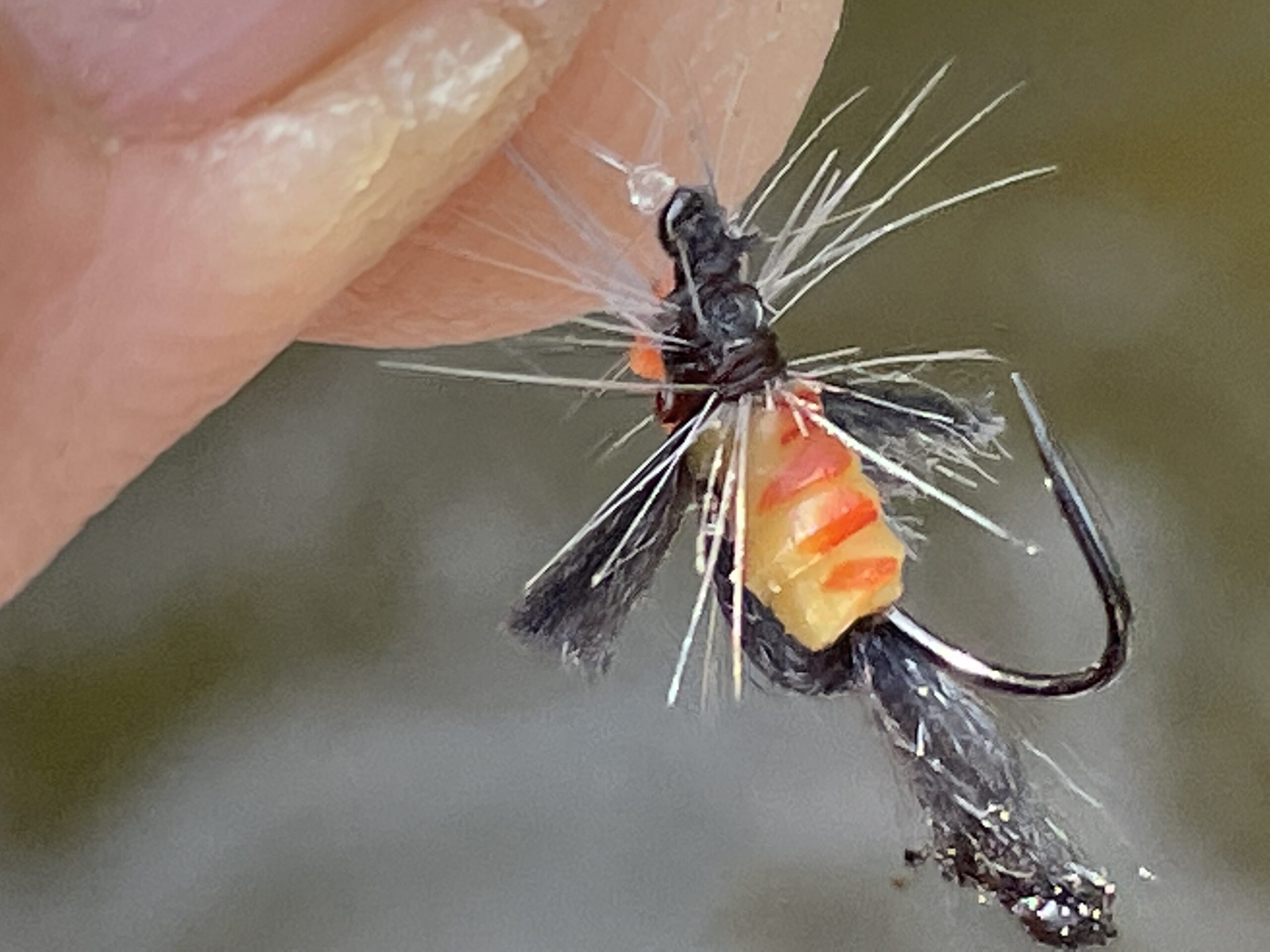

Since the trout has its trigger point locking system dialed in once it identifies the minute characteristics and behavior of the insect it chooses to target, it will lock in on those coordinates and stick with it until the “switch is flipped” and another targeted set of identifiable characteristics and prey coordinates is synthesized into a trout’s predator identification. This ancient foraging mechanism is perhaps more advanced than we think since it allows a trout the caloric energy balancing system it needs to feed and fight currents and flows in the same timeframe- also to not be fooled by bad imitations and wasting efforts on junk. Thus caddis, even though they are sparse and insignificant right at the peak of the mayfly emergence described, the fish appear to target the few caddis that are coming off- but mainly taking the heavy biological meniscus drift of pupae in the film with bulging and occasionally slashing rises.
Another theory seriously tossed around by dry fly fanatics tends to imply intelligence and human anthropomorphism qualities. Here fish feed on the lesser imitated flies like midges and other difficult to imitate minutiae by the angler since it perhaps knows it will not get caught. Having fished the heavily trafficked waters of the Catskills, Montana and other Flies-Only/Catch-and Release waters , with their fussy surface feeders this makes sense and you would swear it to be true. But that is taking the fish’s sense of reasoning, which it surely doesn’t have, a little too high- but!, one would never know.
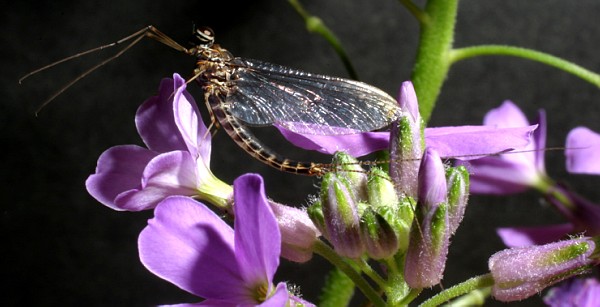
Case 2- Big Fly- Right Fly- Unorthodox Stage We are trained and taught that aquatic insects have complete and incomplete life cycles. Mayflies and stoneflies have a nymphal, adult and spinner stages- incomplete life cycle. Caddis and Midges have a larvae, pupae, adult and egg-laying stage- complete lifecycle.
But what happens when one stage is not represented the way it should. Take for instance the massive gray drake hatches of Michigan and Idaho. Add to these the intense green drake hatches of the east and the Hexagenia hatches of the Great Lakes states . The insects produced in these hatches are astronomical in numbers. In this excess unique scenarios are bound to happen. Most notably in the case of the gray drakes the fact that there are no duns on the water since they all emerge in the middle of the night as nymphs’ crawling up on the shore and streamside structure like logs and weeds.
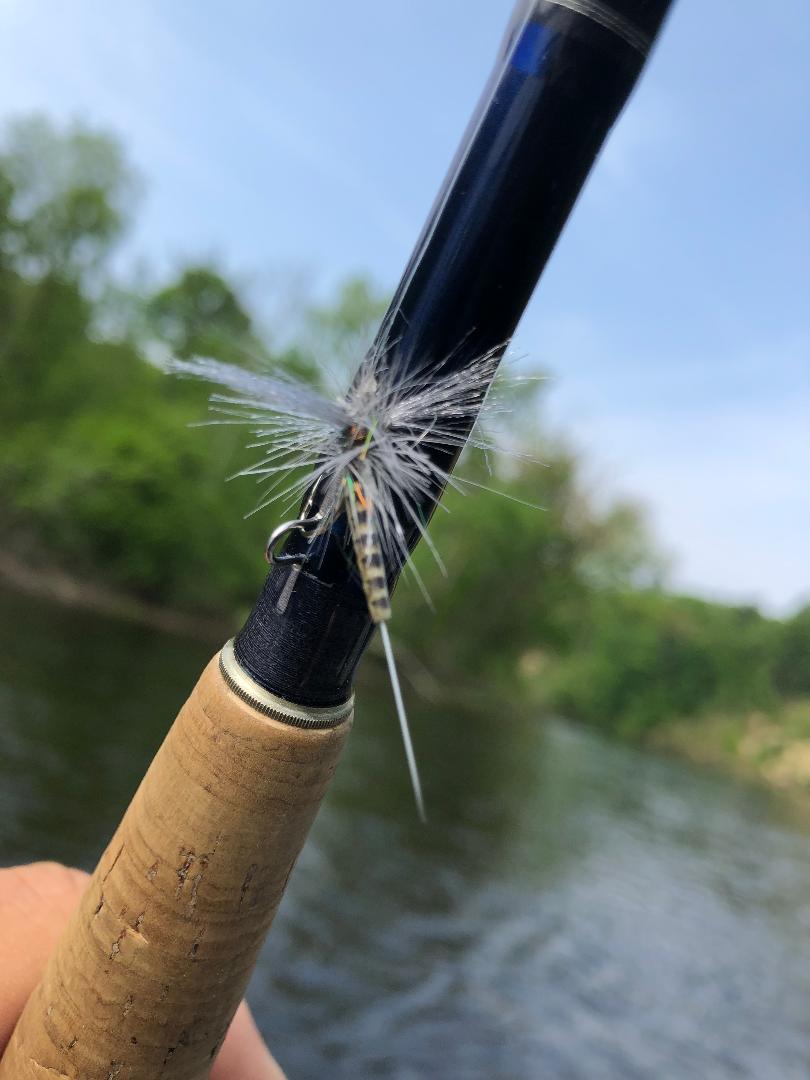
The gray drake hatch on Michigan waters produces brain boggling hatches of big size 10 spinners. They accumulate like sawdust and sludge on the surface during morning and evening spinner flights having dropped their eggs and thus laying flushed. One morning on a guide trip I noticed a very large brown feeding at mid-depth pretty significantly. It was opening its mouth regularity with no apparent hatch or emergence talking place. “What were they feeding on the night before ? ” asked the client. ” Spinners ” I told him .”Lets put one on!” he said. I then put one on-nothing seemed to happen. I knew he probably was wasting his efforts since there was no gray drake spinner fall then. As I tried to encourage him to fish caddis, which was starting to hatch, he put his rod down in the boat as he took a dram of Scotch from his flask and started to puff a cigar since he was on holiday- meanwhile line dangling as rod lay on boat and spinner sunk in water. “Wham!” a descent 17 inch brown was jumping in the air ( note: yes brown trout do jump and quite profusely -especially wilds) That code cracking light bulb went on inside this guide’s brain and I deduced that what that big brown must have been feeding on below the surface was drowned gray drake spinners- probably by the ton from the previous night’s hatch. Considering the amount of spinners on the water that are supposed to float endlessly until disintegrated, a shit-ton probably drowned. But though their caloric value was much less, they still had the prey trigger outline that was firmly downloaded in a trout’s brain for the month or so the hatch will last. This same scenario must take place for the brown and green drakes when they are heavy both on Penn’s Creek and out west. I now carry sunken drake patterns as part of my fly arsenal when all else fails.

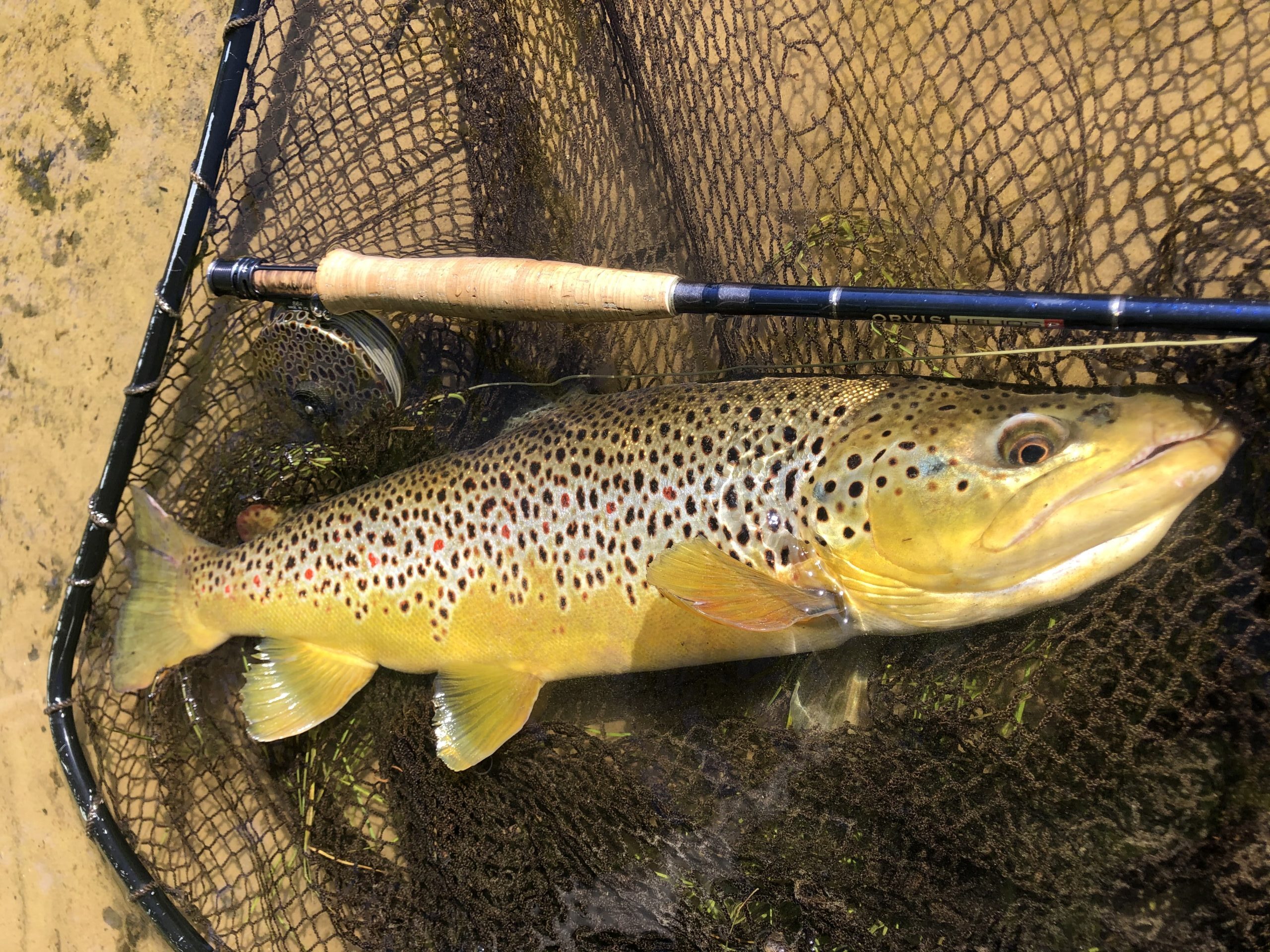
The parallel scenario occurs with nymphs. Nymphs are meant to be fished at middle-depths and on or near the bottom and is thus a clearly subsurface method as we are taught to believe in. As spinners float nymphs are sunk. But what about all the tons of nymphs that never emerge during a Sulphur or Hendrickson hatch. Ephemerella are notorious for struggling to emerge- particularly sulphers on those icy-cold spring creeks and tailwaters. We are not taught to fish nymphs as a dry fly. We are instructed to add some CDC or Snowshoe Rabbit hair to imitate emergers- but not fishing entire true-to-form nymphs as a dry.
The West Branch of the Delaware has astronomical numbers of sulphers that hatch daily for about 3 months out of the year. Numbers are so significant the waters surface turns to yellow sawdust on the upper wasters near Stillesville above Deposit. Countless dozens of anglers fish this hatch and its ultra selective brown trout that have a plethora of naturals over their imitations which often become insignificant and worthless. On a very hot day while filming my “Selectivity” DVD on a sweltering 93F July day ( water temperature 48F) the sulpher hatch was so prolific it was a marvel of nature. At a nearby Walmart I bought a cheap snorkeling set to view the meniscus like a trout would -it was also very refreshing on the head and face in the heat stroke temperatures. What I witnessed was absolutely astonishing.
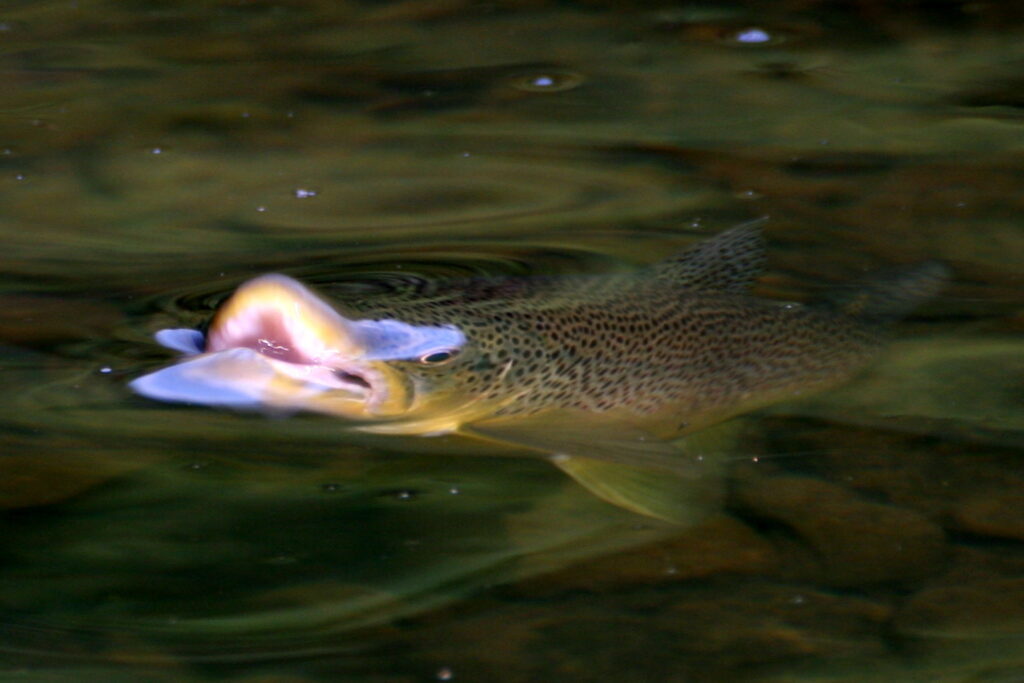
There were thousands of invaria sulpher nymphs trapped in the meniscus film that were no longer wiggling and appeared postmortem – the proverbial aka “still-born nymph” suffocating in transition from aquatic to airborne state. Greasing up a leader with a florescent sighter strike indicator of colored Amnesia in the butt far up the leader I fished a size 16 pheasant tail nymph and proceeded to crush one big brown after another as others fished their perfect Catskill sulpher dries and emergers with very little luck. Thus another unorthodox technique to add to your enigmatic code cracking handbook.
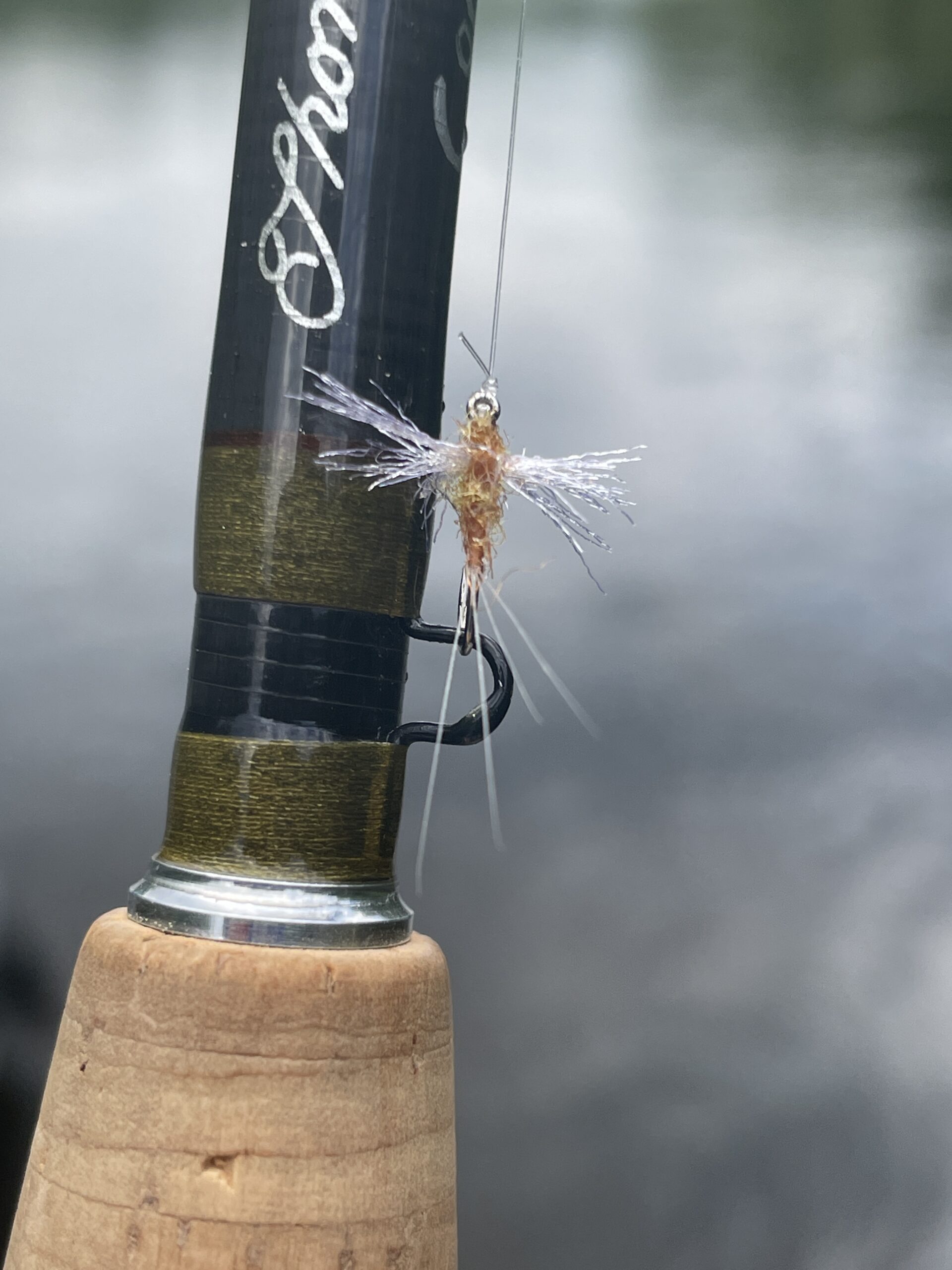
Case 3 -Right Fly-Wrong Stage So… we finally get it dialed in and select the right fly and identify what the trout are taking. But the classical dilemma that forever haunts the angler is what stage of the life cycle they are keyed in on. The right choices are not always obvious and usually hard to detect. Using an emerger will usually help decipher the meniscus puzzle- but not always.
Let’s take the sulpher hatch again- or even add in the bwo hatch or any hatch for that matter. These are very obvious bugs with distinct yellow and green colors that are easily identifiable. But yet as obvious as the adults tend to be, there is one stage that is difficult to see- the spinner. Rusty spinners and tannic colored tailwaters along with mountain streams go perfectly well together in masking these naturals. My biggest revelation occurred during a full blown sulpher invaria hatch on a tailwater when I was almost positive they were taking sulpher emergers. Refusal to our flies were typical and surmounting as dozens of trout were feeding relentlessly. It wasn’t until I bent over to brush some cool water on my sweaty face that I saw the rusty spinner in the film and the code cracking light bulb went off. Rusty spinners from the previous nights massive emergence were still on the water at 4 PM as the sulpher hatch was switched on into full blown emergence-yet the trout’s programming was still focused on spinners.
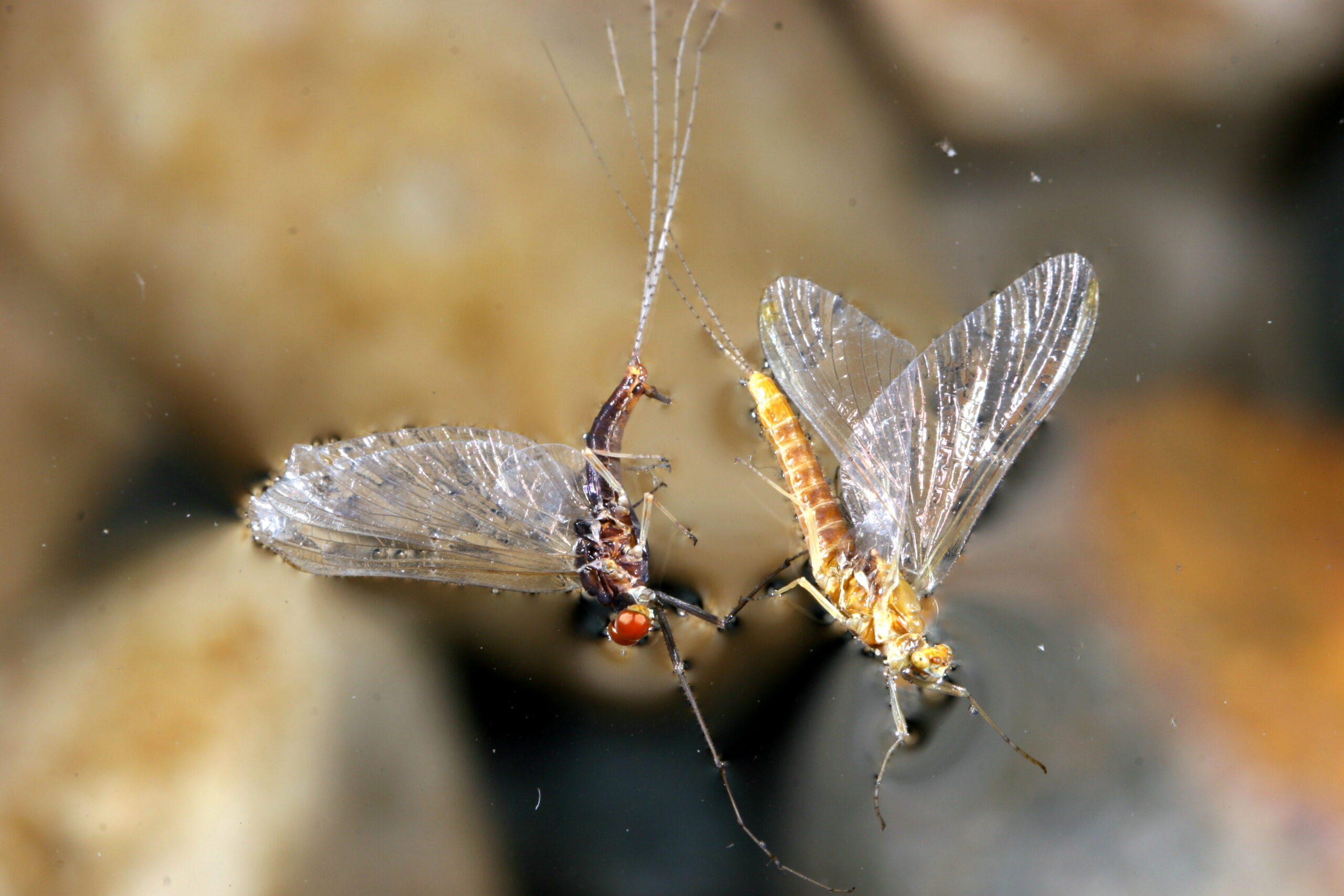
Case 4-No Hatch Then there are those days when fish are rising and there is no perceived hatch or feeding event taking place whatever. Like one of those days Marinarao had on Big Spring back in the 50’s which he talked about in “Modern Dry Fly Code”. Trout rising by the hundreds and nothing seen hatching on the water. There could be a host of culprits from fish taking daphnia or Mysis shrimp stuck in the meniscus from a reservoir emptying into a tailwater; to fish actually feeding on insect shucks which I have seen happen. But there is usually one very good culprit- flying ants.
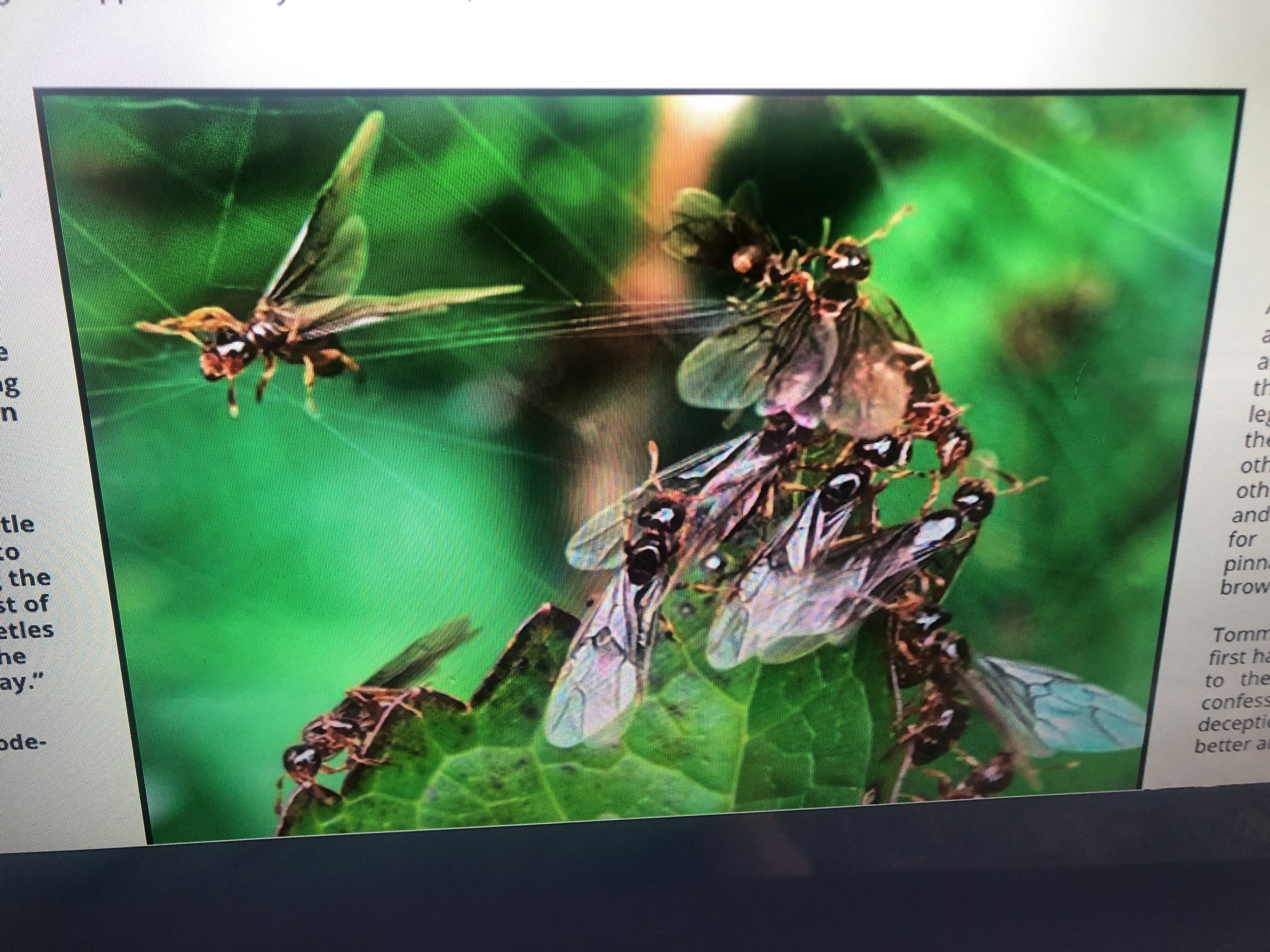
It can happen anytime from June through October. But they are most prominent and heavy during August and late summer when ants fly to find mating partners. They can be really tiny and down to sizes #22-24; or be big size 14’s. Regardless the trout relish them and will take every last one of these delectable eats. When in doubt-pitch an ant! Trout will even move to ants during a super hatch.
Case 5- Right Fly- Right Stage-Wrong Everything Congrats!- you’ve finally figured it out and have dialed it in. So why aren’t you having success! Its probably a perfect storm of everything. Wrong fly size, wrong color, too heavy a tippet, too short a leader/tippet that is creating drag. Or maybe you aren’t imparting enough action in your flies like active caddis elicit. Bad casts put fish down, sun’s shadows off your silhouette; or you are too visible to the fish and need to lower your profile- even from a boat also!, could be a ton of the reasons. Slow down and reexamine everything and go through a check list of what night be the reason. Also you may be flogging the water in your newfound enthusiasm. Sit down and chill!- blend in like a heron would. Its often your rough approach and exuberance that is causing the problem.
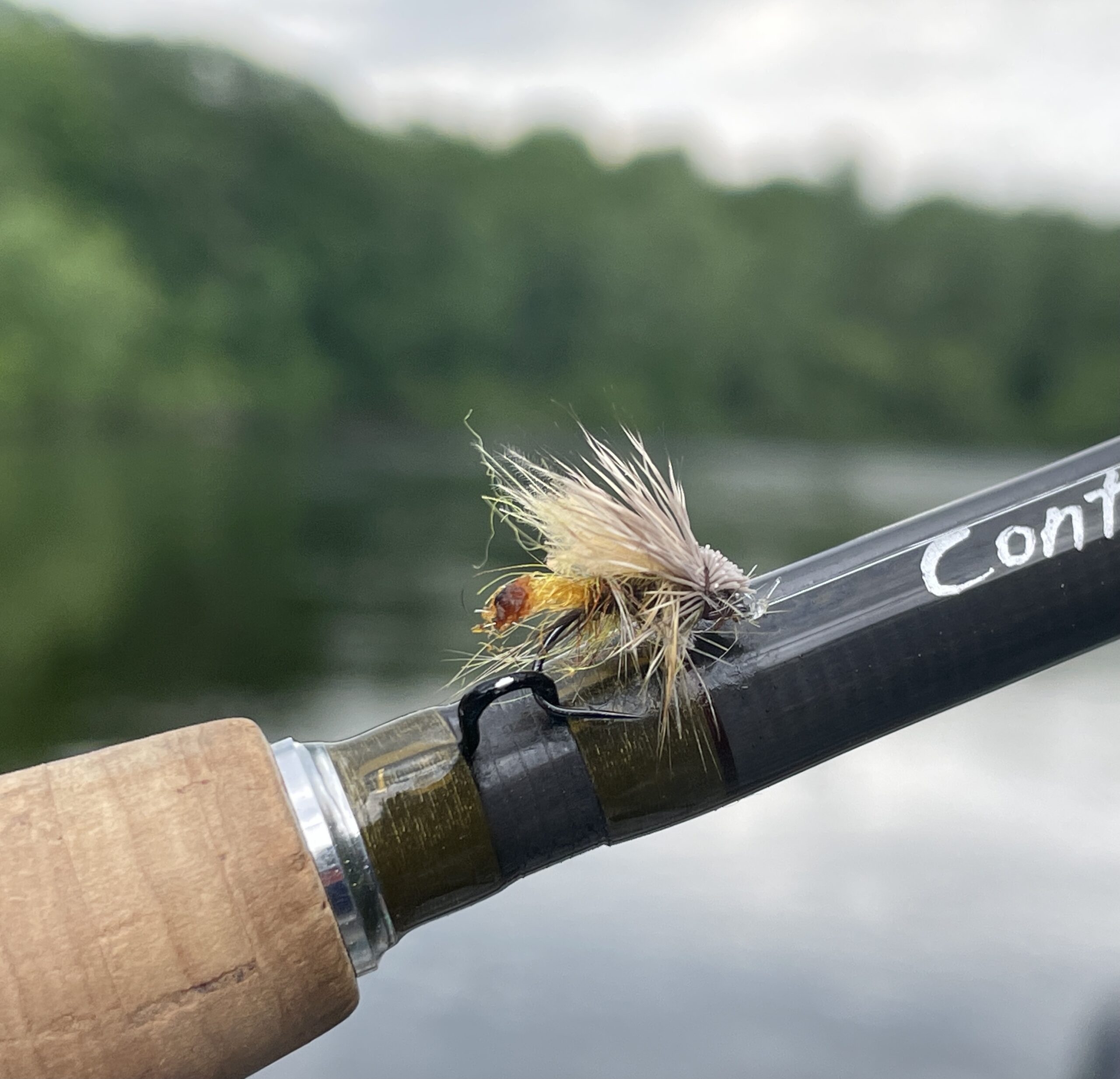
Case 6- Climate Change
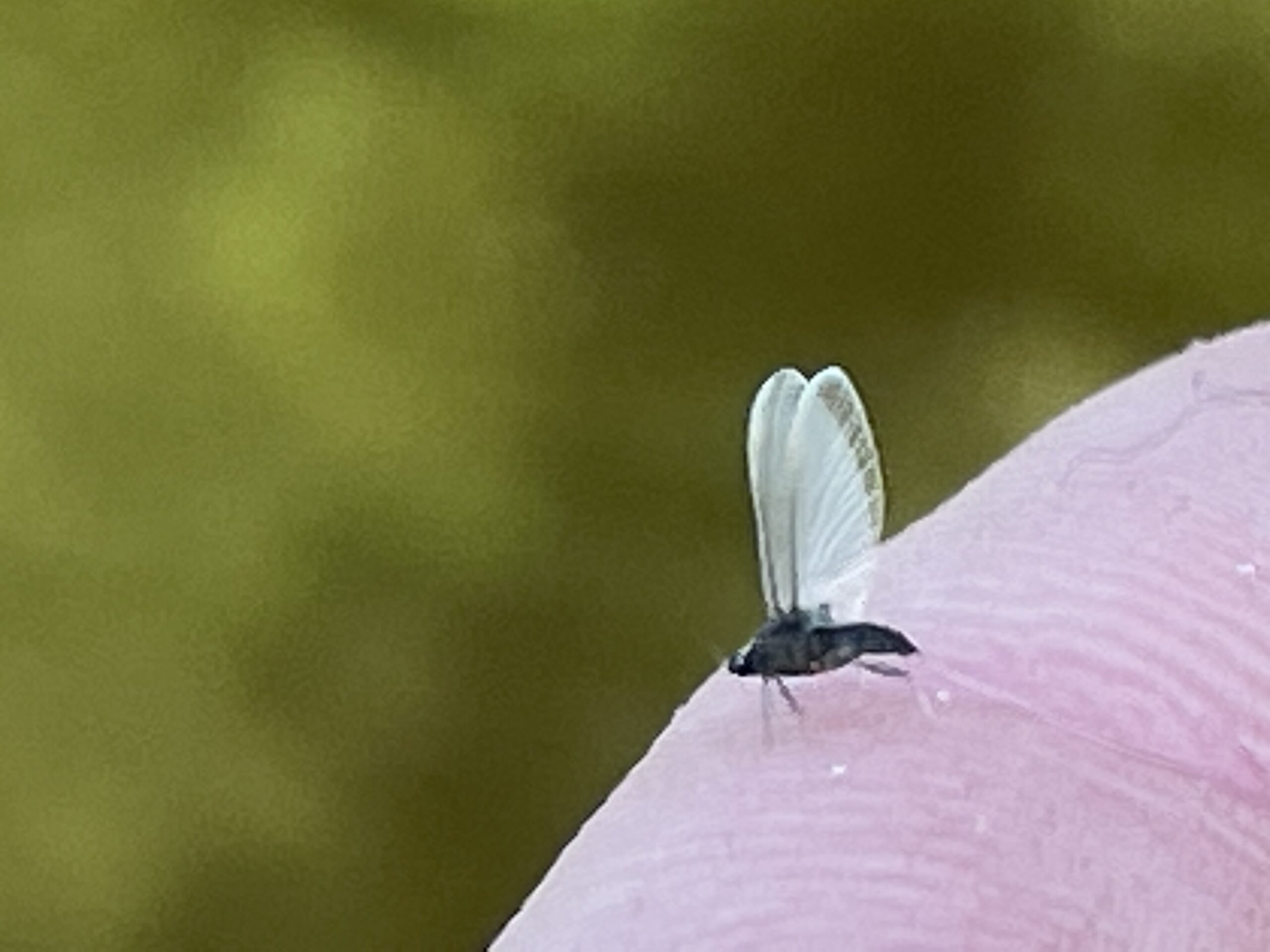
The world is either burning up or flooding- it is crazy! We are in a mindboggling drought; whereas other parts of the country have too much water. The Midwest has had one heatwave after another. These heatwaves drive-up water temperatures quickly and thus increase temperature heating days in the maturity of aquatic insects. Mayfly hatches are occurring earlier than normally. This happened to me in this early June just a few weeks ago when I was fishing the flats of my favorite tailwater. I expected to have sulpher spinners and some tiny Bwo’s on the water. But when refusals after refusals were the norm, I was stupefied and couldn’t figure it out. I decided to seine the surface. Much to my astonishment there were #24 Trico spinners on the water- I was shocked! Tricos don’t usually start up until July 4th at earliest. Here it was on the water a full month early. Climate change will continue to diminish hatches or proliferate and accelerate their emergence depending on where you are in the globe
Hope this helps! Regardless of how successful you are on any given day, always relish being on the water and having the opportunity to learn from nature and the ways’ of the trout. Nothing is more beautiful and purer than that.
Matthew Supinski
Hallowed Waters-https://hallowedwaters.com/
( Author’s Note: For more reading on Masking Hatches see my books : “Selectivity” and the “The Brown Trout-Atlantic Salmon Nexus” available at your fly shops/bookstores/Amazon – also ” What the Trout Said” Datus Proper– and “Mayflies the Angler and the Trout” Fred Arbona – and the entire Documentary 5 part Series on the Catskill Legacy on my Hallowed Waters Podcasts– Apple and Spotify